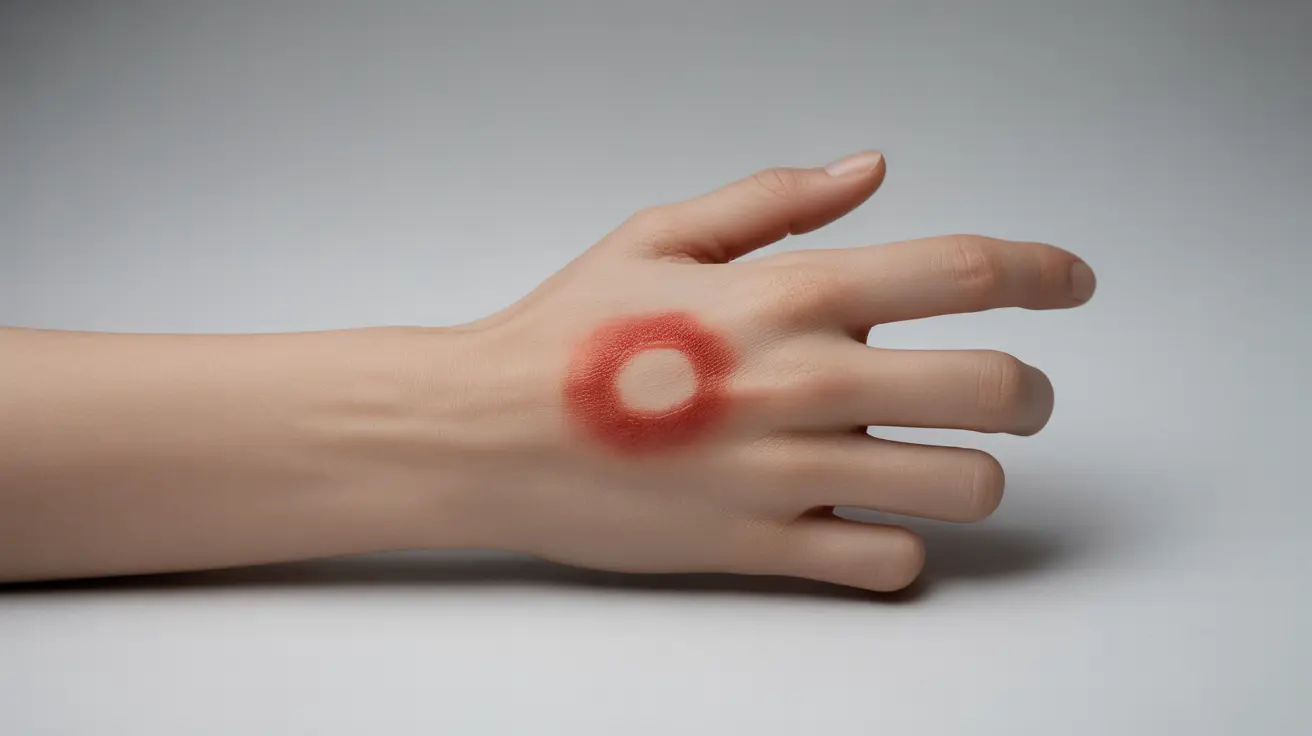Brown recluse spider bites can be a serious medical concern, requiring prompt recognition and appropriate treatment. While most bites heal without complications, understanding the symptoms, proper treatment steps, and when to seek medical care is crucial for anyone living in areas where these spiders are common.
This comprehensive guide will help you identify brown recluse spider bites, understand their potential complications, and learn about effective treatment options and prevention strategies.
Identifying Brown Recluse Spider Bites
Initial bite symptoms can be subtle and may go unnoticed at first. The bite area typically becomes red, tender, and mildly painful within 2-8 hours. Unlike other spider bites, brown recluse bites often develop a characteristic pattern:
- Initial stinging sensation
- Redness and warmth around the bite
- Development of a white blister or pale center
- A red ring surrounding the pale center ("bull's-eye" appearance)
- Mild to moderate pain that increases over 8 hours
Immediate First Aid Steps
If you suspect a brown recluse spider bite, taking prompt action can help minimize potential complications:
- Clean the bite area with mild soap and water
- Apply a cold compress to reduce pain and swelling
- Elevate the affected area if possible
- Take over-the-counter pain relievers if needed
- Document the progression of symptoms with photos
- Keep the bite area clean and monitor for changes
When Medical Care Is Essential
Certain symptoms indicate the need for immediate medical attention:
- Severe pain that continues to worsen
- Spreading redness or warmth around the bite
- Development of a deep purple or blue color
- Fever, chills, or body aches
- Nausea or vomiting
- Joint pain
- Severe headache
- Development of an ulcer or black tissue
Understanding Potential Complications
While rare, brown recluse spider bites can lead to serious complications:
Tissue Necrosis
In some cases, the venom can cause tissue death (necrosis) around the bite area. This typically develops within several days and may require surgical intervention.
Systemic Reactions
Some individuals may experience systemic symptoms including:
- Severe fatigue
- Fever and chills
- Blood disorders
- Kidney problems
- Seizures (in rare cases)
Prevention and Home Safety
Preventing brown recluse spider bites involves several practical measures:
- Seal cracks and crevices in walls and foundations
- Remove bed skirts and keep bedding from touching the floor
- Inspect shoes and clothing before wearing
- Keep storage areas organized and clutter-free
- Use sticky traps in basements and dark corners
- Wear gloves when handling stored items
Frequently Asked Questions
What are the common symptoms of a brown recluse spider bite and how soon do they appear?
Common symptoms include stinging sensation, redness, and mild pain within 2-8 hours of the bite. A characteristic "bull's-eye" pattern often develops, with a pale center surrounded by redness. Symptoms typically intensify over 8-24 hours.
How should I treat a brown recluse spider bite at home before seeing a doctor?
Clean the area with soap and water, apply cold compresses, elevate the affected area, and take over-the-counter pain relievers if needed. Document the bite's progression with photos and keep the area clean and dry.
When is it necessary to seek medical attention for a brown recluse spider bite?
Seek immediate medical care if you experience severe pain, spreading redness, purple/blue discoloration, fever, chills, nausea, joint pain, or if an ulcer or black tissue develops at the bite site.
Can a brown recluse spider bite cause serious complications like tissue death or systemic symptoms?
Yes, in some cases, bites can lead to tissue necrosis (death) around the bite area and systemic symptoms including fever, blood disorders, and kidney problems. While rare, these complications require immediate medical intervention.
How can I identify and prevent brown recluse spider bites in my home or yard?
Prevent bites by sealing entry points, reducing clutter, inspecting clothing and shoes, using sticky traps, and wearing protective gear when handling stored items. Brown recluse spiders prefer dark, undisturbed areas, so regular cleaning and organization can help reduce their presence.




